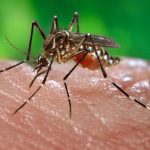Featuring our 100th individual endorsement, the balance between open and proprietary science, the reality of the open access vision, the COVID-19 Health Literacy Project, a meta-database of COVID-19 clinical trials, a new journal metric and tips for making the most of article metrics.
Our 100th individual endorsement via Open Pharma
We at Open Pharma are pleased to announce that our position statement on open access now has 100 individual endorsements. Our aim is to ensure that, one day, all clinical and research data are immediately available to all those who need it. If you agree with our mission, please read and endorse our position statement. This brings our total number of endorsements from both organizations and individuals to 131!
Tipping the status quo of open science via Fortune
Historically, the status quo between open and proprietary science has been in balance. However, in recent decades, the economic drug development crisis has tipped the balance towards proprietary science, slowing interdisciplinary partnerships and collaboration. Now, the unprecedented levels of data sharing precipitated by the COVID-19 pandemic have unbalanced this status quo. E. Richard Gold asserts that, going forward from COVID-19, we have to maintain open science as the cornerstone in our arsenal against global crises, so as not to waste what we have learned during this outbreak.
Is the current open access approach as revolutionary as we think? via UNDARK
The original vision for open access, as published in the 2002 Budapest Declaration, saw a future in which academic publishing and data sharing would be managed in collaboration as a commons (a future that is already well established in Latin America). However, many current open access endeavours have simply turned existing processes on their head, charging for submission rather than readership, and, as such, are still for-profit commercial processes. With this in mind, Michael Schulson asks: is the industry really evolving or is it business as usual in a new guise?
The COVID-19 Health Literacy Project via STAT News
Many health organizations already provide COVID-19 information in multiple languages, with the most comprehensive resource being the COVID-19 Health Literacy Project, which offers fact sheets in 35 languages and counting, including lesser spoken languages such as Navajo and Oromo. The project was started by Harvard Medical School student Pooja Chandrashekar, who sought to address the need for wider access to health information in non-English speaking communities.
COVID-19: a database of databases via TranspariMED
This meta-toolkit summarizes the databases and resources that are tracking and compiling information on ongoing COVID-19 clinical trials. The toolkit builds upon aggregated information sourced from the Centre for Evidence-Based Medicine’s COVID-19 TrialsTracker, the National Institute of Health Research Innovation Observatory’s COVID-19 Updates, TrialScope’s Corona Clinical Trials, the World Health Organization’s International Clinical Trials Registry Platform and the soon-to-be-launched COVID-Evidence Database.
Measuring transparency via The Publication Plan
A new metric for journals (the TOP factor), based on the eight Transparency and Openness Promotion (TOP) guidelines, has been launched by The Center for Open Science. Over 250 journals have already been assessed for research transparency, preregistration and replication, and the results have been published in an online rating system.
Making the most of article metrics via The MAP Newsletter
Article metrics can be assessed by either four key categories (reach, readership, engagement and translational impact) or by using an aggregate metric of multiple categories, such as the Altmetric Attention Score or the Plum Print. Here, members of the International Society for Medical Publication Professionals’ Social Media and Web-Based Metrics Working Group explore the benefits of using the different methods to assess article metrics and how they can be used to inform publication planning.
We at Open Pharma would like to continue to encourage all our readers to look after themselves and their community and continue to follow advice from their country’s government and health organizations.
Coronavirus mental health and wellbeing resources:






